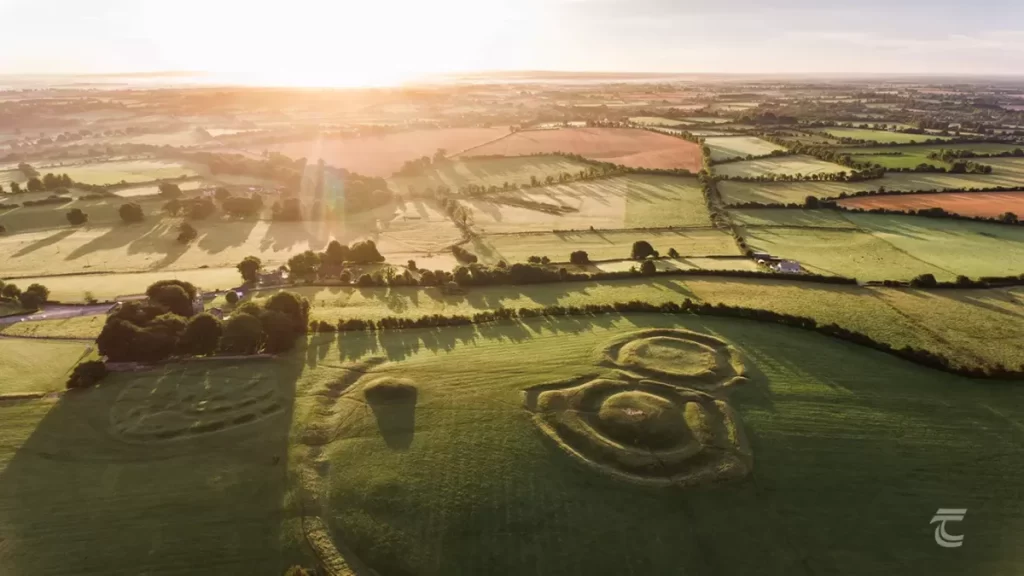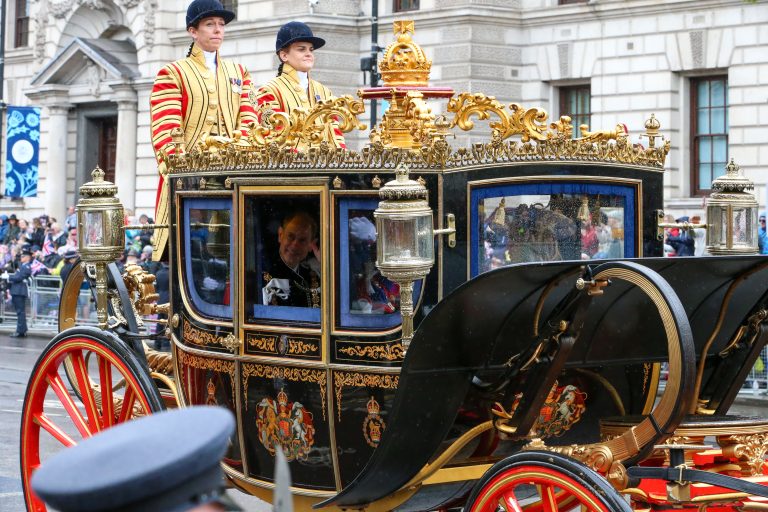
The Hill of Tara (Irish: Cnoc na Teamhrach), nestled in County Meath, is one of Ireland’s most treasured historical and mythical sites. For millennia, this iconic hill has stood as a symbol of sovereignty, spirituality, and Irish cultural identity.
It occupies a prominent position in Irish history and mythology, as a seat of ancient kings, a ceremonial landscape, and a place imbued with spiritual significance.
In exploring the Hill of Tara, we delve into the heart of Ireland’s story—a story deeply rooted in its myths, politics, and cultural traditions. This comprehensive account sheds light on its importance, covering its origins, archaeological significance, mythological associations, and enduring cultural impact.
Origins and Archaeological Significance
The Hill of Tara has a long and complex history, stretching back to the Neolithic period. Archaeological evidence reveals human activity on the site as far back as 4000 BCE, with the construction of passage tombs such as the Mound of the Hostages (Dumha na nGiall), which predates the Egyptian pyramids.
The Mound of the Hostages is a central feature of the Hill, containing human remains, grave goods, and decorated stones, all of which testify to its use as a ceremonial and burial site. Its alignment with the rising sun during the spring and autumn equinoxes suggests the importance of celestial events to its builders.
Over time, Tara evolved into a ritual landscape of earthworks, circular enclosures, and standing stones. These include the Rath na Ríogh (Fort of the Kings), the Banqueting Hall (an elongated earthwork), and the Stone of Destiny (Lia Fáil). Together, these features highlight the Hill’s role as a center of power, assembly, and spiritual connection.
The Mythological Seat of Kings
In Irish mythology, the Hill of Tara is described as the seat of the High Kings of Ireland (Ard Rí na hÉireann). The kingship of Tara was not merely a political role but also a spiritual one. The High King was seen as a mediator between the mortal world and the divine, tasked with ensuring harmony and prosperity for the land and its people.
One of the most famous symbols of Tara’s kingship is the Lia Fáil, the Stone of Destiny. According to legend, this stone would roar in approval when touched by the rightful king. The Lia Fáil thus became a powerful symbol of legitimacy and sovereignty.
Tara’s kingship is central to tales like the Lebor Gabála Érenn (The Book of Invasions), which recounts the mythological history of Ireland. Figures such as Nuada of the Silver Hand, the Dagda, and Cormac mac Airt are all associated with Tara, weaving the Hill into the tapestry of Ireland’s mythic past.
Spiritual Significance
The Hill of Tara holds profound spiritual meaning in Irish tradition. As a sacred landscape, it was believed to be a dwelling place of the gods (Tuatha Dé Danann) and otherworldly beings. The concept of Tara as a liminal space—where the mortal and divine worlds meet—is a recurring theme in Irish folklore.
One of the Hill’s most intriguing features is its association with the goddess Medb (or Maeve), often linked to sovereignty and fertility. Medb’s presence at Tara symbolizes the union between the king and the land, a bond essential for the well-being of the realm.
Furthermore, Tara’s prominence in early Christian Ireland cannot be overlooked. St. Patrick, Ireland’s patron saint, is said to have challenged the pagan kings of Tara during his mission to convert Ireland to Christianity. The legend of St. Patrick lighting the Paschal fire on the nearby Hill of Slane, in defiance of the pagan rituals at Tara, represents a pivotal moment in Ireland’s spiritual transformation.
A Political and Cultural Powerhouse
Tara’s role as a political and ceremonial center persisted well into the medieval period. It served as a venue for assemblies, such as the Feis Temro (Feast of Tara), where laws were codified, alliances formed, and disputes resolved. These gatherings reinforced Tara’s status as the heart of Ireland’s political and cultural life.
The Hill of Tara also features prominently in Irish literature. Medieval texts such as the Annals of the Four Masters and the Dindshenchas (lore of place names) preserve detailed accounts of Tara’s history, myth, and significance. These writings cement Tara’s legacy as a cornerstone of the Irish canon.
Tara in the Modern Era
In the 19th century, the Hill of Tara gained new importance during Ireland’s struggle for independence. Daniel O’Connell, the great Irish liberator, held a mass meeting at Tara in 1843, attended by hundreds of thousands, to demand the repeal of the Act of Union. This event infused Tara with a modern sense of national identity and resistance.
More recently, Tara has faced challenges to its preservation. The controversial construction of the M3 motorway in the early 21st century, which runs close to the Hill, sparked widespread protests. Advocates for Tara’s protection argued that its integrity as a cultural and archaeological site must be safeguarded for future generations.
Enduring Cultural Impact
The Hill of Tara remains a powerful symbol of Ireland’s heritage. As a UNESCO World Heritage candidate, it continues to attract visitors from around the world, drawn by its rich history and mystical aura. For modern-day Ireland, Tara is not just an archaeological site but a cultural touchstone, evoking pride, memory, and a connection to the past.
Its influence extends beyond the shores of Ireland, inspiring artists, writers, and scholars to explore its themes of kingship, spirituality, and identity. The Hill of Tara is more than a historical monument; it is a living symbol of the Irish spirit.
Explore the Hill of Tara and More
For those intrigued by the Hill of Tara and other iconic Irish sites, visit Secret Ireland to uncover the stories, legends, and history that make Ireland a land like no other. From ancient mythology to modern marvels, Secret Ireland is your gateway to exploring the richness of Irish heritage.







1 thought on “The Hill of Tara: A Gateway to Ireland’s Mythological and Historical Legacy”
Comments are closed.